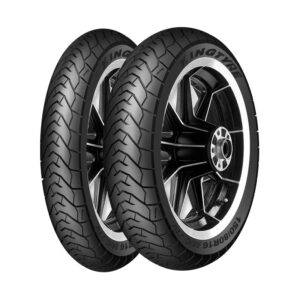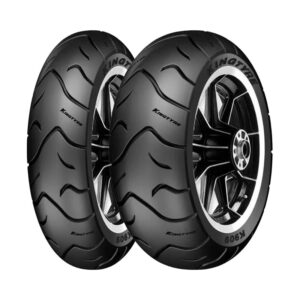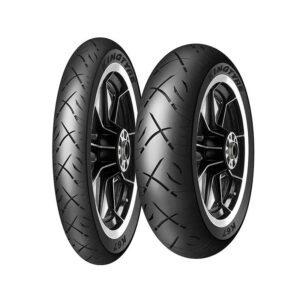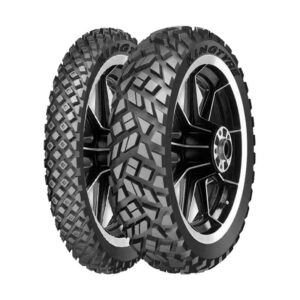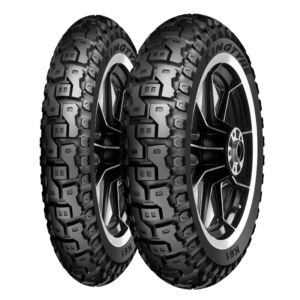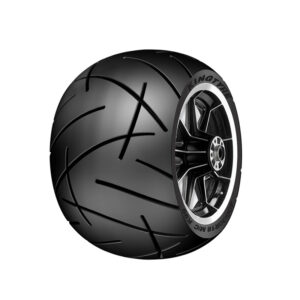You’re geared up, the sun is shining, and a network of winding forest trails is calling your name. But before you twist the throttle, there’s one simple yet critical question to answer: what is the best tire pressure for your trail bike? Getting this single setting wrong can turn a perfect ride into a struggle for control, while getting it right unlocks your bike’s true potential.
Unlike the rigid, high-pressure rules for street riding, off-road motorcycle tires demand a more nuanced approach. The perfect pressure isn’t a single number; it’s a range that you fine-tune based on the terrain, your riding style, and the specific dirt bike tires you’re running. In this guide, we’ll break down everything you need to know to find that sweet spot, ensuring your next adventure is both safe and incredibly fun.
Why Tire Pressure is Your Secret Weapon Off-Road
Think of your tire pressure as the primary suspension for your contact patches. It’s the first and most crucial element that absorbs impacts and finds traction. Running the correct pressure for your off-road motorcycle tires is the difference between floating over obstacles and fighting your bike all day.
- Maximizes Grip and Traction: Lower pressure allows the tire to conform to the terrain, putting more of the tread pattern in contact with the ground. This is essential for climbing hills, navigating roots, and powering through loose surfaces.
- Improves Shock Absorption: A softer tire acts as an additional suspension element, soaking up bumps, rocks, and ruts. This reduces rider fatigue and helps keep the bike stable and planted.
- Enhances Puncture Protection: While it sounds counterintuitive, running too low a pressure can be dangerous. The correct pressure prevents the tire from “pinching” the tube against sharp rocks, a common cause of flats known as snakebite punctures.
- Provides Predictable Handling: Properly inflated tires offer consistent feedback and predictable slides, giving you the confidence to push your limits safely.
Finding Your Starting Point: General Pressure Recommendations
So, where do you begin? For most trail riding conditions, a great starting point is between 12 to 14 PSI (pounds per square inch). This range offers a fantastic balance of grip, cushioning, and pinch flat protection for the average rider on a typical trail.
- For Standard Trail Riding: Start at 13 PSI. This is your baseline. Go for a short ride and assess how the bike feels. Is it bouncing off rocks? Does the tire feel vague in corners?
- For Heavier Riders or Aggressive Terrain: If you are a heavier rider or will be tackling rocky, high-speed trails, you might want to start at the higher end of this range, around 14 PSI, for extra rim protection.
- For Lighter Riders or Soft Terrain: If you are a lighter rider or riding in primarily soft, loamy, or sandy conditions, you can experiment with pressures as low as 10-12 PSI to maximize the tire’s footprint and flotation.
Important Note: Always check your pressure with a high-quality, portable gauge when the tires are cold. Pressure increases as the tires heat up during riding, so a cold reading is your only accurate baseline.
Fine-Tuning for Your Terrain: The Pressure Adjustment Guide
Once you have your baseline, it’s time to fine-tune. The “best” dirt bike tire for trail riding is one that is set up correctly for the specific challenges you face. Use this guide to make smart adjustments.
For Rocky and Root-Infested Trails
- Challenge: Sharp impacts that can cause pinch flats and a rough, jarring ride.
- Adjustment: You may need to run slightly higher pressure (13-15 PSI) to protect your rim and prevent flats. The trade-off is a slight loss of traction on smooth surfaces.
For Sand and Soft Loam
- Challenge: The bike needs to “float” on top of the soft surface rather than dig in.
- Adjustment: This is where you can safely drop the pressure. Running 10-12 PSI allows your dirt bike tires with more grip to balloon out, creating a larger contact patch that keeps you on top of the sand.
For Hard-Packed and Intermediate Terrain
- Challenge: Finding grip on a hard, slick surface or a mix of hardpack and loose topsoil.
- Adjustment: Your baseline of 12-14 PSI is perfect here. It provides enough flex for the knobs to bite into the terrain without excessive squirm that can feel unstable.
For Muddy Conditions
- Challenge: The tire needs to clean itself by shedding mud and biting down to find solid ground.
- Adjustment: A moderate pressure (12-13 PSI) is ideal. Too low, and the tire flexes too much and clogs with mud. Too high, and it won’t conform enough to find traction underneath the slop.
The Kingtyre K82: Engineered for Trail Perfection
While pressure is key, it works in tandem with your tire’s design. The Kingtyre K82 is specifically engineered to be the best dirt bike tire for woods riding. Its design philosophy complements the pressure adjustments we’ve discussed.
- Optimized Knob Pattern: The K82 features a staggered knob design that provides multiple biting edges for exceptional grip on both straight-line acceleration and while leaning into corners. When run at the correct pressure, these knobs flex perfectly to hook up on a variety of surfaces.
- Reinforced Carcass: A robust construction allows you to confidently run lower pressures for maximum grip without worrying about excessive tire deformation or sidewall damage. This makes it one of the most reliable dirt bike trail tires for technical terrain.
- Self-Cleaning Ability: The well-spaced knobs are designed to shed mud effectively, ensuring that your tire continues to perform even when the trail gets messy. This means the grip you get at 12 PSI is consistent and predictable.
Your Quick-Action Tire Pressure Checklist
Before every ride, run through this simple checklist:
- Check Cold: Always measure pressure before you start riding.
- Know Your Baseline: Start at 13 PSI for general trail riding.
- Assess the Terrain: Adjust up for rocks, down for sand.
- Consider Your Load: Add 1-2 PSI if carrying heavy packs.
- Listen to Your Bike: If the tire feels like it’s folding or squirming in corners, add air. If it’s bouncing off everything and lacking grip, let a little out.
- Carry a Gauge and Pump: Always be prepared to make adjustments on the trail.
Conclusion: Unlock Your Bike’s Potential
Finding the best tire pressure for your trail bike is a dynamic and essential part of off-road riding. It’s not about memorizing a single number, but understanding how to adjust for your environment. By starting with a sensible baseline and learning to fine-tune for the terrain, you transform your bike’s handling, safety, and performance. Paired with a purpose-built tire like the Kingtyre K82, you have the ultimate combination for conquering any trail with confidence.
Reach out to us for personalized consultation based on your specific motorcycle tires requirements.
